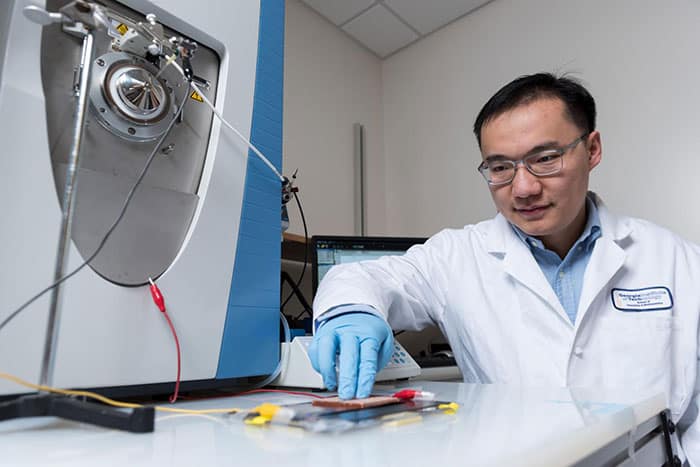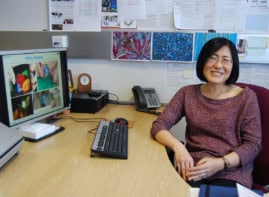Flash Physics is our daily pick of the latest need-to-know developments from the global physics community selected by Physics World‘s team of editors and reporters

Flower doubles as supercapacitor
Two years ago, researchers at Linköping University in Sweden showed that a rose can form the basis of a transistor. Now team member Roger Gabrielsson and colleagues have used a similar flower to create a supercapacitor that can store a large amount of electrical energy. The team put a cut rose into a polymer solution, which was absorbed by the flower. The material polymerizes spontaneously within the stem, leaves and petals of the flower to create long threads that conduct electricity. This allows a large amount of electrical change to be pumped into the flower. “We have been able to charge the rose repeatedly, for hundreds of times without any loss on the performance of the device,” explains team member Eleni Stavrinidou. “The levels of energy storage we have achieved are of the same order of magnitude as those in supercapacitors.” She adds that without any further optimization, the rose supercapacitor is capable of powering an ion pump and various types of sensors. The rose supercapacitor is described in the Proceedings of the National Academies of Science.
Head of Oak Ridge National Lab steps down

Thom Mason has announced he will step down as director of Oak Ridge National Laboratory (ORNL) on 1 July 2017 – exactly 10 years after first taking the job. ORNL is the US’s largest science and energy laboratory and focuses on materials, neutron science, energy, high-performance computing, systems biology and national security. It operates two neutron facilities – the High Flux Isotope Reactor and the $1.4bn Spallation Neutron Source – as well as two supercomputers. Mason, an experimental condensed-matter physicist originally from Canada, will become senior vice president for laboratory operations at Battelle – a private non-profit science and technology firm that is based in Columbus, Ohio. Battelle, together with the University of Tennessee, manages ORNL for the US Department of Energy. ORNL is now looking for Mason’s replacement.
Triboelectric generator gives mass spectrometer a boost

A device that generates electricity from friction has been used to increase the sensitivity of a mass spectrometer to “unprecedented levels”, according to Facundo Fernández, Zhong Lin Wang and colleagues at the Georgia Institute of Technology in the US. Triboelectric nanogenerators (TENGs) convert mechanical energy to electrical energy and are of great interest to Wang and others who are building systems to harvest energy from the environment. The team’s TENG provides an ionizing voltage of 6000–8000 V to a mass spectrometer, compared with the 1500 V that is supplied by a conventional source. The TENG voltage alternates in polarity and the corresponding current is supplied in a very precise manner. The team believes that this voltage is extremely efficient at ionizing the sample – the first stage of operation of a mass spectrometer – and this means that a stronger measurement signal is obtained. The alternating and controlled nature of the signal also allows higher voltages to be used without damaging the sample or the mass spectrometer. Most mass spectrometers operate in a pulsed mode, so a pulsed TENG ionization voltage could be synchronized to ensure that the sample is only ionized when necessary. This could allow very small samples to be analysed at higher sensitivities because precious ions would not be wasted. Fernández says that the TENG allowed “us to reach sensitivity levels that are unheard-of – at the zeptomole scale”. TENGs could also make mass spectrometers more compact and portable by replacing conventional ionization voltage supplies, which tend to be large and bulky. Looking further into the future, it may even be possible to create mass spectrometers that are powered by TENGs alone. The research is described in Nature Nanotechnology.
- You can find all our daily Flash Physics posts in the website’s news section, as well as on Twitter and Facebook using #FlashPhysics.



